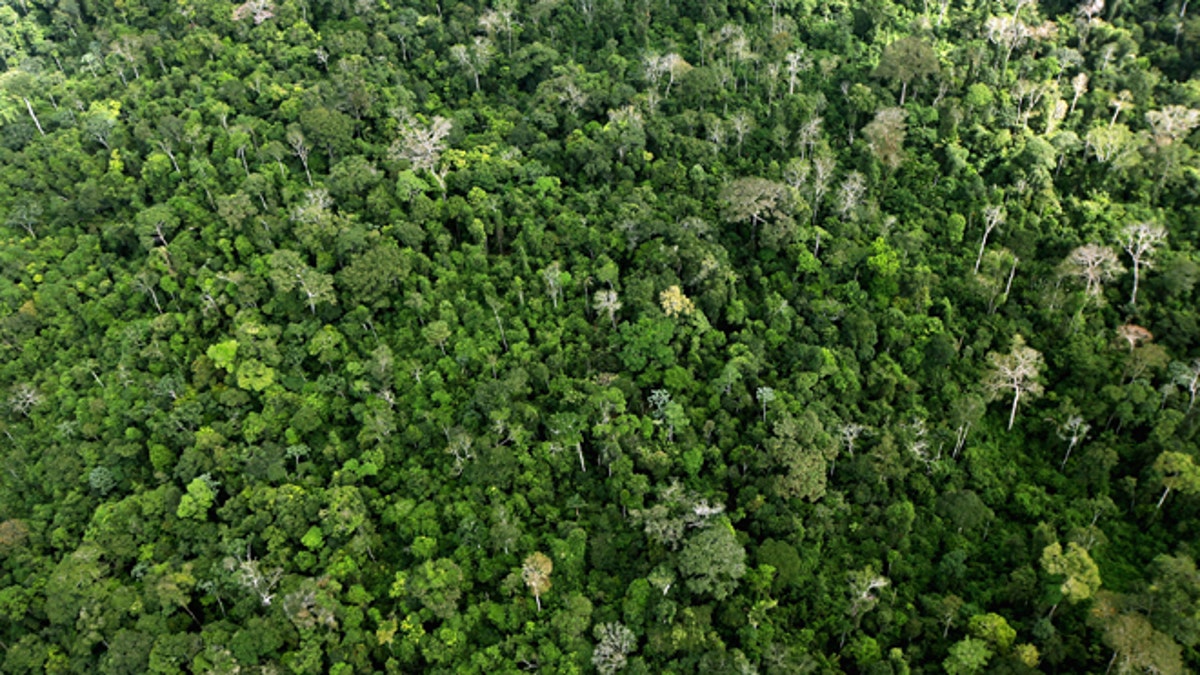
NEAR ALTAMIRA, BRAZIL - JUNE 15: The Amazon rainforest is seen near construction of the Belo Monte dam complex in the Amazon basin on June 15, 2012 near Altamira, Brazil. Belo Monte will be the world?s third-largest hydroelectric project and will displace up to 20,000 people while diverting the Xingu River and flooding as much as 230 square miles of rainforest. The controversial project is one of around 60 hydroelectric projects Brazil has planned in the Amazon to generate electricity for its rapidly expanding economy. While environmentalists and indigenous groups oppose the dam, many Brazilians support the project. The Brazilian Amazon, home to 60 percent of the world?s largest forest and 20 percent of the Earth?s oxygen, remains threatened by the rapid development of the country. The area is currently populated by over 20 million people and is challenged by deforestation, agriculture, mining, a governmental dam building spree, illegal land speculation including the occupation of forest reserves and indigenous land and other issues. Over 100 heads of state and tens of thousands of participants and protesters will descend on Rio de Janeiro, Brazil, later this month for the Rio+20 United Nations Conference on Sustainable Development or ?Earth Summit?. Host Brazil is caught up in its own dilemma between accelerated growth and environmental preservation. (Photo by Mario Tama/Getty Images) (2012 Getty Images)
The Amazon is a dense, humid, unforgiving place filled with poisonous creatures and plants. Without mosquito nets, a good pair of boots, a truckload of anti-malarial medications and a strong constitution it’s pretty much unlivable, right?
Just tell that to a group of ancient people who called the Amazonian region home nearly 10,400 years ago.
While analyzing forest islands - small forested mounds of earth found throughout the Amazon – Swiss archeologists discovered the 10,000-year old remains of a human settlement that is the oldest archaeological site in the Amazon region.
“We have discovered the oldest archaeological sites in western and southern Amazonia,” said study author Doctor Umberto Lombardo, from the University of Bern, according to the Daily Mail. “These sites allow us to reconstruct 10,000 years of human-environment interactions in the Bolivian Amazon.”
Scientists from the University of Bern were analyzing the mounds when they found shell middens or mounds of seashells that date back to early settlers from the Holocene period, around 10,400 years ago. Besides the sea shells, soil samples also indicated the presence of snail shells, animal bones and charcoal.
Talk about a pre-Hispanic barbeque.
Radiocarbon dating from the site indicates a very settled society in the Amazon, with the evidence that the shells and other artifacts built up into mounds over a 6,000 year period of human use. Moving up in the layers there appears other leavings such as earthenware pottery, bone tools and human bones.
The site is believed to have been abandoned as the climate shifted toward wetter conditions.
Follow us on twitter.com/foxnewslatino
Like us at facebook.com/foxnewslatino
